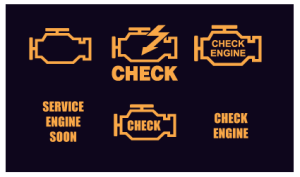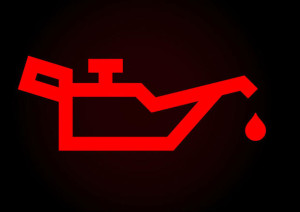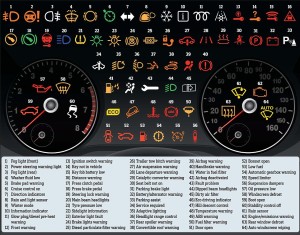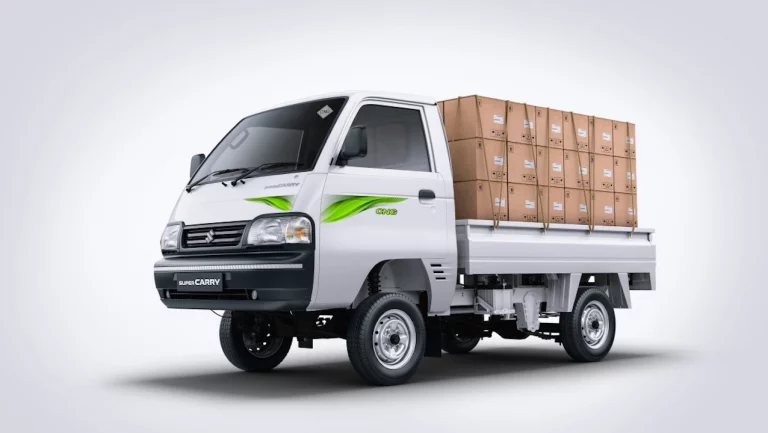Keeping your vehicle in good condition is equally as important as following the traffic rules.
The following tips are provided to help you avoid the dangers of auto repair so you don’t injure yourself or someone else. Most of these tips are common sense warnings, but there may be some things you are not aware of that could pose a potential danger.
Know your Dashboard Light Signals:
Check Engine light:

If the check engine light illuminates, it will either blink or remain constant, depending on the problem. Either way, you should have the vehicle checked by a Qualified Service Technician as soon as possible.
If the light is steady. The problem is not an emergency, but you should schedule an appointment as soon as possible.
A blinking light usually indicates a severe engine problem.
Check Oil Level:

Low oil pressure will cause the engine to be damaged severely. Hence it is advisable to get the problem checked immediately. It could either be due to a faulty oil delivery system or low oil level, in which case it needs to be topped up. If the icon is still illuminated, seek for prompt assistance.
Check Brake System:

These warning lights indicate that brake system is faulty due to electronic failure or due to the low brake fluid levels. When you encounter these indicators, check if your handbrake is disabled.
If the indicator still persists, you should seek immediate mechanical assistance.
Here are some of the common dashboard warning lights:

Tire Pressure:
Over- inflated or under- inflated tires can cause many concerns such as:
- Poor handling.
- Uneven and accelerated wear and tear of the tires.
- Poor fuel efficiency.
Make sure your tire pressure is just right to extend your mileage, for better safety and for longevity of tires. It is recommended that the tire pressure should be checked every 15 days.
How to remove and tighten while changing tires:
It is important to make sure that the nuts/lugs be removed in a star pattern (once you loosen one nut, loosen the nut opposite to it and so on). This is to ensure that the tire starts to loosen up uniformly making your tire changing experience more fast and effective.
Follow the same pattern while tightening the nuts after changing the tire to ensure the tire goes on uniformly as well.
Defogging your windshield:
When the interior of the windshield is foggy:
Turn on the AC (with the windshield vent on), start with a cold setting and gradually turn it down to your desired temperature as the windshield clears up.
Planning a Road trip? Things to Check Before You Take Off:
- Check air pressure of the tires.
- Check air filter for any clogs.
- Check all fluids including oil, coolant, brake fluid etc.
- Make sure all the lights and signals are working.
- Make sure you have everything you need for the trip like tire changing kit, wiping cloths, tissues, flashlights etc.
Automotive safety and road safety is important for us and our family as well as to others.









